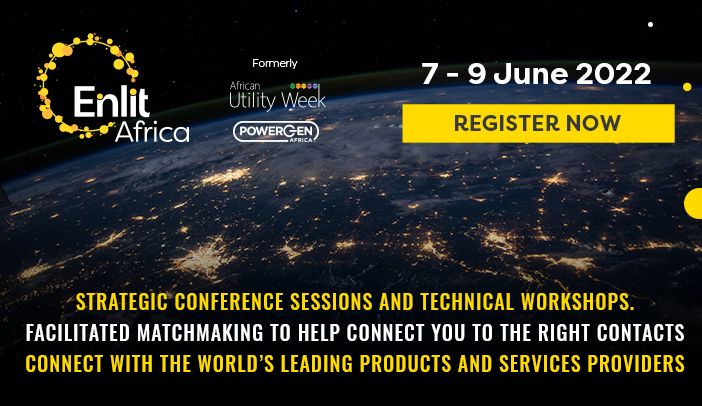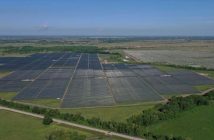- The construction of solar power and wind energy plants can’t separate itself from the colossal carbon-intensive cement industry.
- The necessity of cement means that renewable energy isn’t entirely clean power.
In terms of carbon emissions, the cement industry – the lifeblood of any construction – is considered a high-end offender.
Here’s why.
Calcination, the carbon-intensive step, happens early in cement production when crushed limestone and clay are fed into a kiln and heated to roughly 1,400 degrees Celsius (1,500 degrees Fahrenheit). At this point, the limestone breaks down into lime and carbon dioxide.
Reaching this high temperature is currently delivered by fossil fuels.
Therefore, powering this step with renewable energy resources will reduce the cement industry’s carbon footprint and, in turn, that of new renewable power plant construction.
I am happy to report that this is taking shape, and cement is getting a facelift.
In Zimbabwe, cement manufacturer Pretoria Portland Cement (PPC) is set to develop a 30MW solar power plant in line with its decarbonisation strategy. The manufacturer advised that with the tender process now complete, it will start constructing the envisaged solar plant at Colleen Bawn in Matabeleland South this year.
Notably, 15MW will go toward powering the clinker establishment (clinker is a nodular material used as the binder in cement products), while the rest will be fed into the national grid. A winning recipe for this plant and cement production.
Related news: Cement and concrete industry targets a carbon neutral future
In North America, Mexican cement maker Cemex announced achieving the first step in fully powering its clinker plants with solar energy. The company is also exploring clinker alternatives, like burnt shale oil or glass furnace slag.
In Kenya, Bamburi Cement, part of Lafargeholcim, signed a power purchase agreement (PPA) with independent power producer MOMNAI Energy. The PPA includes two solar plants at Bamburi’s Mombasa (14.5MW) and Nairobi (5MW) sites as the firm moves towards a cleaner, sustainable footprint.
In Nigeria, the BUA Group has commissioned the construction of a 70MW dual-fuel gas-fired power plant specifically for BUA Cement’s Sokoyo Line.
Concentrated solar power R&D targets cement
Meanwhile, ventures are underway worldwide to reduce this industry’s footprint. For example, in Spain, the SOLPART project aims to develop and implement a high temperature (800-1000°C) 24h/day solar process suitable for reactive particle thermal treatment in energy-intensive non-metallic minerals’ industries, such as cement, lime, phosphate or clay processing.
These industries need a significant part of their energy input as heat, currently in the form of combustion. The project demonstrates that solar energy can provide this process heat in a continuous mode, including particle high-temperature transport and storage systems.
In the US, renewable technology company Heliogen is developing a similar project. Its concentrated solar power solution uses computer vision software to precisely align an array of mirrors, reflecting sunlight to a target on the top of a tower. Powered by artificial intelligence (AI), the modular system aims to deliver low-cost renewable energy in heat, power or hydrogen fuel.
Besides the use of AI, what makes this project so interesting?
The CSP plant’s carbon-free, ultra-high temperature heat is designed to power heavy industrial processes, including cement and steel manufacturing. Amazing.
Until we invent an alternative, the use of cement will remain for the foreseeable future. The projects and R&D underway to decarbonise cement production may seem too little to make a noticeable impact relative to the industry’s carbon belch. However, it is a start.
Hopefully, bringing these steps to light will motivate looking further afield, such as research into incorporating hydrogen, biomass and even clean electricity – in place of combustion – for the intense heating processes needed.
Author: Nicolette Pombo-van Zyl
Nicolette is the Editor of ESI Africa print journal, ESI-Africa.com and the annual African Power & Energy Elites. She is passionate about placing African countries on the international stage and is driven by the motto “The only way to predict the future is to create it”. Join her in creating a sustainable future through articles and multimedia content.
This article was originally published on ESI Africa and is republished with permission with minor editorial changes.
Join Nicolette at the upcoming Enlit Africa expo & conference taking place at the CTICC in Cape Town on 7–9 June 2022 to share your views on this topic and more.
Disclaimer: The articles and videos expressed in this publication are those of the authors. They do not purport to reflect the opinions or views of Green Building Africa, our staff or our advertisers. The designations employed in this publication and the presentation of material therein do not imply the expression of any opinion whatsoever on the part Green Building Africa concerning the legal status of any country, area or territory or of its authorities.














